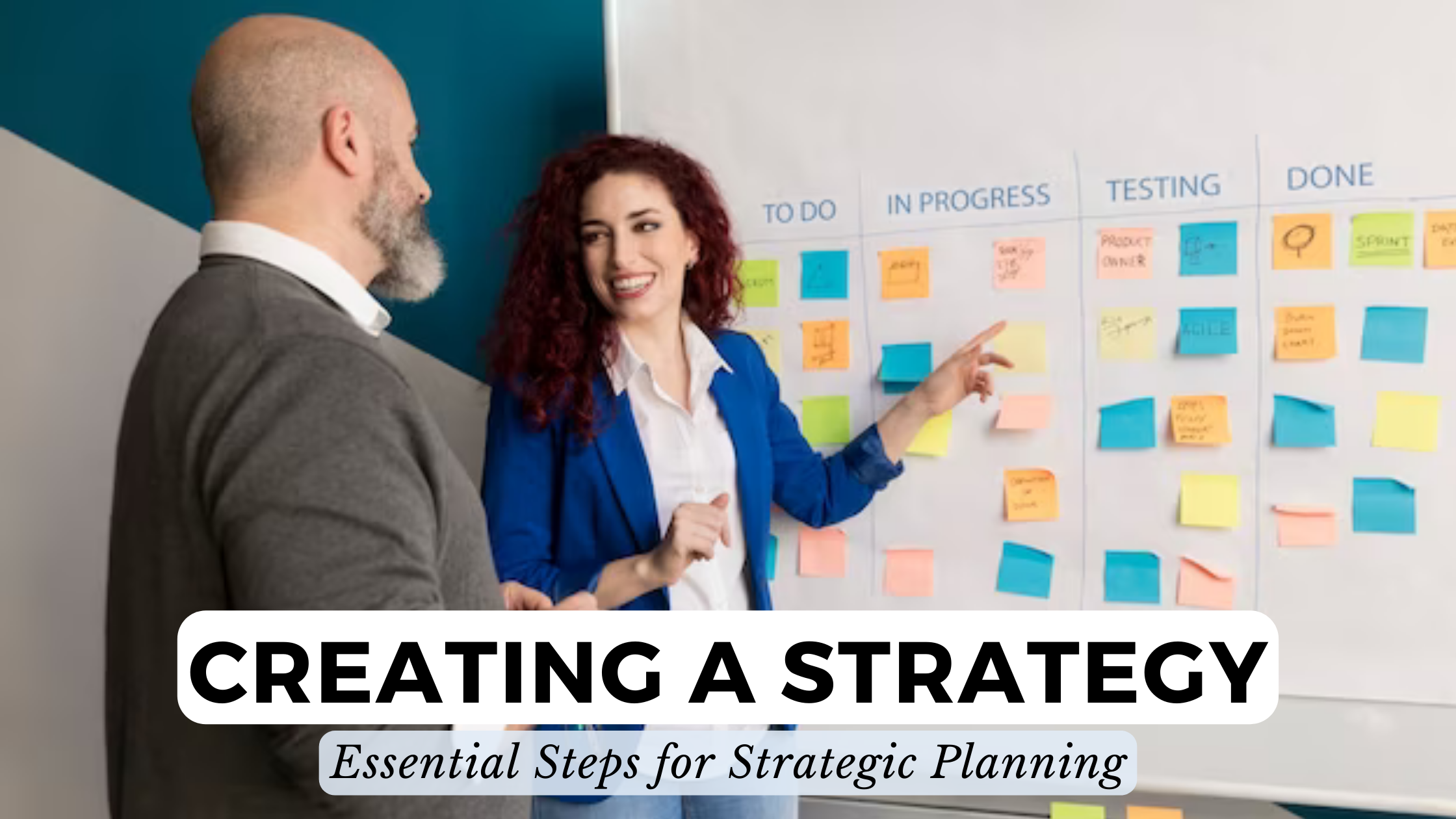Creating a Strategy: Essential Steps for Strategic Planning
- Expense Management Software Credit Cards Investing Business Solutions


Creating a Strategy: Essential Steps for Strategic Planning
Having a clear strategy and plan in place is crucial for the success of any website or online business. With the right strategic approach, you can set meaningful goals, allocate resources efficiently, and measure your progress. This allows you to stay focused and pivot when needed.
When it comes to developing an effective strategy, there are some key steps to follow:
1. Define Your Goals and Objectives
First, take time to clearly define your short-term and long-term goals. Consider what you want to accomplish in the next few months as well as 1-3 years down the road. Get specific about the desired results you want to see.
Setting S.M.A.R.T. goals can help ensure your objectives are realistic and measurable. Outline tangible metrics like increased traffic, higher conversion rates, and revenue targets.
With clear goals outlined, it becomes easier to chart a course and monitor your progress.
2. Research Your Target Audience
Gaining insight into your target audience is crucial for developing content and offerings that truly resonate. Spend time researching audience demographics, interests, pain points, and motivations.
Tools like DisplayPurposes and Survicate make it easy to run customized surveys to learn more about your audience. You can also analyze existing customer data or feedback.
Understanding your audience allows you to tailor your messaging and strategy to their needs and preferences. This ultimately helps drive engagement and conversions.
3. Analyze Your Current Performance
Before defining the strategy going forward, take time to analyze where your website currently stands. Review analytics to see which pages and campaigns are performing best.
Identify areas that need improvement, such as pages with high bounce rates or landing pages with low conversion rates. Audit your website for technical SEO issues as well.
Tools like Google Analytics provide powerful data and insights to inform your strategy.
4. Map Out Your Website Content
One key component of any website strategy is content. Take inventory of your existing content and map out the new topics and pages you need to develop.
Organize content into categories or buckets that align with your goals. For example, you may want pages focused on product education, thought leadership, lead generation, etc.
Prioritize creating content that answers your audience’s key questions and solves their pain points. Useful tools for content planning include CoSchedule and Trello.
5. Define Your Conversion Funnels
To turn your website visitors into customers, you need to map out your conversion funnels. Plot out the journey you want visitors to take from initial landing page to becoming a customer.
Determine the key pages and CTAs that will lead visitors through this funnel. This allows you to identify any gaps or weak points in the process.
Tools like Funnelytics provide powerful visual mapping of your conversion funnels.
6. Select Marketing and Outreach Channels
An important piece of your strategy is determining which marketing and outreach channels you will leverage. Based on your goals and audience research, pinpoint the best platforms to reach potential customers.
Consider channels like email, social media, SEO, and paid advertising. Outline the tactics you will implement in each channel and how they will work together to attract and convert visitors.
7. Define Your KPIs
A crucial step is identifying your key performance indicators (KPIs) – the metrics that matter most. KPIs allow you to gauge progress towards your goals.
Examples of website KPIs include organic traffic, lead conversion rate, cost per acquisition, and email subscribers gained.
Determine 1-3 KPIs for each goal outlined in step one. Tracking these metrics ensures your strategy stays focused.
8. Assign Roles and Resources
With your strategy defined, determine what resources and team members you need to execute it successfully.
Outline which team members will own each area of strategy like content, social media, email marketing, etc. Make sure to assign roles and responsibilities clearly.
Also allocate budget and tools for any paid marketing, development needs, or outsourcing required. Adequate resourcing is key.
9. Develop Timelines
Create a detailed timeline for when you will achieve certain milestones and execute on various strategic initiatives.
While some elements like social media and content creation are ongoing, other items like new product launches or website redesigns may have a fixed completion date.
Developing a timeline keeps all stakeholders aligned and on track.
10. Monitor and Refine
Once your strategy is in place, continuously monitor your KPIs and marketing performance. Assess what’s working well and what areas need optimization.
Be prepared to quickly adapt and refine your approach based on insights and results. Respond to changes in your market as well.
Ongoing refinement ensures your strategy remains effective. Be open to testing new tactics as well.
Key Takeaways
- Clearly define your short and long-term goals. Use S.M.A.R.T. goal setting.
- Research your target audience thoroughly.
- Analyze your current website performance and SEO.
- Map out website content topics and funnels.
- Determine marketing channels and campaigns.
- Establish quantifiable KPIs.
- Assign team roles and resources.
- Develop detailed timelines.
- Monitor data and refine continually.
Executing each step in this strategic planning process allows you to craft a high-impact website strategy. With a plan tailored to your business goals and audience, you can boost engagement and achieve real results.
Consistently evaluating performance and trends will enable you to refine your approach over time. The investment made in thoughtful strategy development will pay dividends through increased conversions and revenue.
Subscribed.FYI is a useful tool for managing the SaaS subscriptions and expenses associated with executing your website strategy. As you evaluate new software tools and services across areas like analytics, email marketing, and more, Subscribed.FYI enables you to efficiently track expenses, identify cost savings, and consolidate billing.
With Subscribed.FYI, you can:
- Maintain a centralized dashboard to easily monitor the SaaS tools you are using for your website strategy.
- Get alerts about upcoming renewals and quickly cancel any unnecessary subscriptions.
- Identify opportunities to renegotiate contracts and optimize spending.
- Consolidate multiple vendor bills into one invoice to simplify expense tracking.
- Evaluate costs of new SaaS tools you may be considering.
- Generate reports on total software costs to inform budget planning.
Optimizing your SaaS spending through Subscribed.FYI ensures you maximize resources available for critical initiatives like content development, marketing campaigns, and product rollouts. It’s a key component to executing your strategy in a streamlined, cost-effective manner.
Relevant SaaS Tools and Resources
- Ahrefs – SEO and content research
- Buffer – Social media management
- CoSchedule – Editorial calendar
- DisplayPurposes – Custom audience surveys
- Funnelytics – Conversion funnel mapping
- Google Analytics – Website analytics
- Impact – Partnership marketing
- Lemlist – Email outreach
- Moz – SEO tools
- Survicate – Audience surveys
- Trello – Project management





